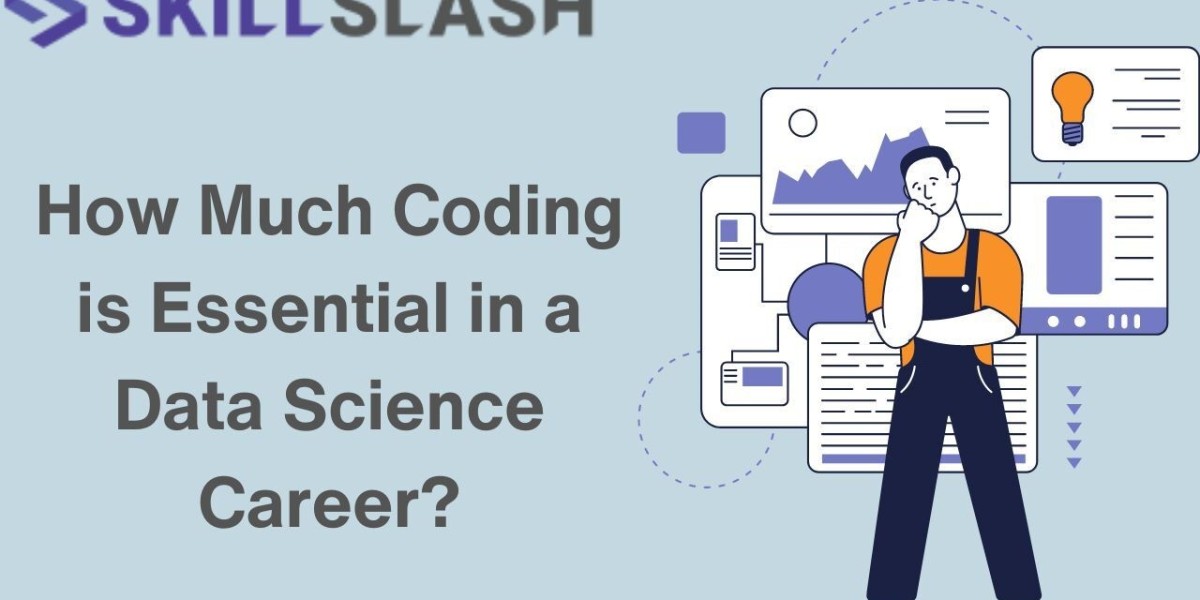Introduction:
Data science – the enigmatic realm where numbers and algorithms dance together in a dazzling tango of insights and innovation. It's the land where Excel spreadsheets transform into crystal balls, predicting the future with a flourish of Python scripts and R incantations. But hold on a second, aspiring data sorcerers, before you dive headfirst into this realm of binary spells and statistical potions, let's address the question that tickles the minds of many: How much coding does a data science career truly demand?
Imagine this: you're about to embark on a journey, and like any good adventurer, you want to know the lay of the land. Will your path be paved with elegant Python elegance, or will you find yourself hacking away at code like an intrepid explorer in a dense jungle of brackets and semicolons? Fear not, dear data dilettante, for we're here to unravel this intriguing enigma with a touch of wit and a splash of humor.
In the digital age, where data is hailed as the new gold rush and algorithms are the pickaxes, data scientists are the modern-day prospectors. They sift through heaps of data to unearth precious nuggets of insights, all while juggling programming languages like a circus performer managing flaming batons. But just how many of these linguistic acrobatics must a data scientist master to strike gold in their career? Are we talking about casually flirting with code or committing to a full-blown relationship?
In this age of technological marvels, we're here to dissect the myth, peel back the layers, and give you an insider's peek into the magical world of data science coding. So, buckle up, intrepid explorer of the data dimension, as we embark on a whimsical quest to uncover the secrets of coding in the data science realm. Whether you're a coding connoisseur or a programming Padawan, prepare to be enlightened, amused, and just maybe, a tad more prepared to embrace the data-driven universe with a smirk and a keystroke. Let the coding chronicles begin! Keep reading to learn more.
The Coding Landscape in Data Science:
Coding is an integral part of data science, serving as the foundation for various tasks within the data analysis lifecycle. While the extent of coding can vary depending on the specific role and responsibilities, data scientists generally engage in coding activities such as data cleaning, transformation, feature engineering, modeling, and visualization. Proficiency in programming languages like Python and R is essential, as they provide a versatile toolkit for handling, analyzing, and visualizing data.
Data Collection and Preprocessing:
Data science projects commence with data collection and preprocessing, which often involves retrieving data from various sources and preparing it for analysis. Coding is essential to parse and structure the raw data into a usable format. This process includes tasks like data cleaning, handling missing values, and merging datasets. Effective coding practices streamline these tasks, ensuring that the data is accurate and reliable for subsequent analyses.
Exploratory Data Analysis (EDA):
EDA is a critical phase in data science, where data scientists explore and understand the characteristics of the dataset. Coding skills play a significant role in creating meaningful visualizations and statistical summaries that uncover patterns, trends, and potential outliers within the data. Proficiency in data visualization libraries like Matplotlib, Seaborn, and ggplot2 empowers data scientists to communicate insights effectively.
Model Development and Machine Learning:
One of the core functions of a data scientist is building predictive models and applying machine learning algorithms to extract valuable insights. Coding proficiency becomes even more crucial in this phase, as data scientists need to implement, fine-tune, and evaluate complex models. Libraries like scikit-learn, TensorFlow, and Keras enable data scientists to develop sophisticated machine learning models, while coding skills are necessary for data preprocessing, feature selection, and hyperparameter tuning.
Collaboration and Deployment:
Data science is often a collaborative effort, requiring effective communication and teamwork. Coding facilitates collaboration by enabling data scientists to share their code, methodologies, and findings with team members. Moreover, coding is crucial for deploying machine learning models into production environments, where they can provide real-time insights and drive business decisions.
Domain-Specific Knowledge and Flexibility:
While coding is undeniably essential in a data science career, the amount of coding required can vary based on the domain and industry. Some data science roles may emphasize more coding-intensive tasks, such as natural language processing (NLP) or computer vision, where advanced coding skills are necessary to develop intricate algorithms. On the other hand, certain roles might focus more on data analysis and interpretation, requiring a solid foundation in coding without the need for extensive algorithmic development.
Conclusion:
And there you have it! We've journeyed through the data realms, armed with curiosity and a touch of whimsy, to unravel the grand question: "How much coding is really needed in a data science career?" Like a cryptic riddle, this query has kept many an aspiring data magician awake at night, wondering whether they need coding prowess akin to a superhero's or just enough to impress their laptop.
As we bid adieu to this expedition, let's take a moment to reflect on what we've discovered. Data science, the modern-day alchemy, is indeed a domain where coding is more than a mere handshake; it's the secret language that allows us to converse with the machines, coaxing them to reveal the hidden truths within the numbers.
Whether you're diving into the data science ocean to build Titanic-level predictive models or dancing with decision trees like nobody's watching, a solid coding foundation is your trusty ship and compass. From collecting and cleaning data (a digital version of sorting socks, if you will) to sculpting intricate algorithms like a data Michelangelo, coding is the heart that keeps the data science engine purring.
So, whether you're a coding wizard who can conjure insights with a mere flick of the keyboard or a coding novice bravely navigating this uncharted territory, know this: you're not alone in this quirky, code-filled adventure. As you traverse the landscapes of data, remember that coding is your steadfast companion, your confidant in the realm of zeros and ones.
Now, armed with wit, humor, and a newfound appreciation for the art of coding, go forth, brave data explorer! Tackle those datasets with the gusto of a caffeinated squirrel and debug like a digital detective on a caffeine high. Embrace the coding quirks, celebrate the "Eureka!" moments, and remember, even when your code seems to rebel, a well-placed semicolon can often work wonders.
So, dear reader, as you embark on your data science odyssey, may your code be bug-free, your insights be illuminating, and your journey be peppered with just the right amount of laughter and keyboard acrobatics. Happy coding, and may your data never be null and void!






